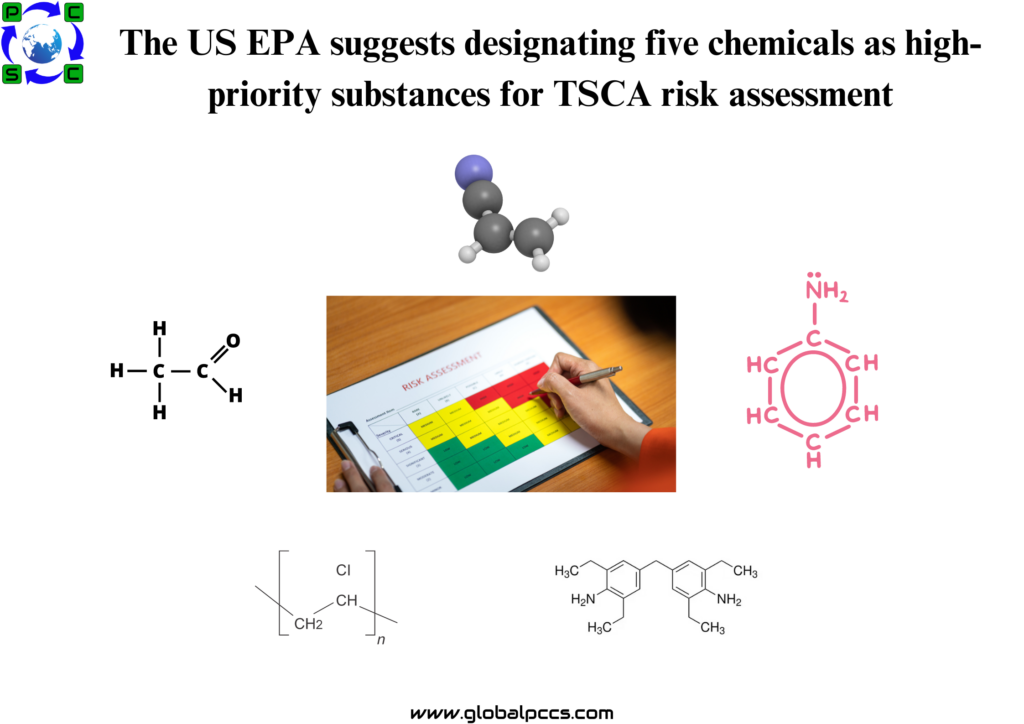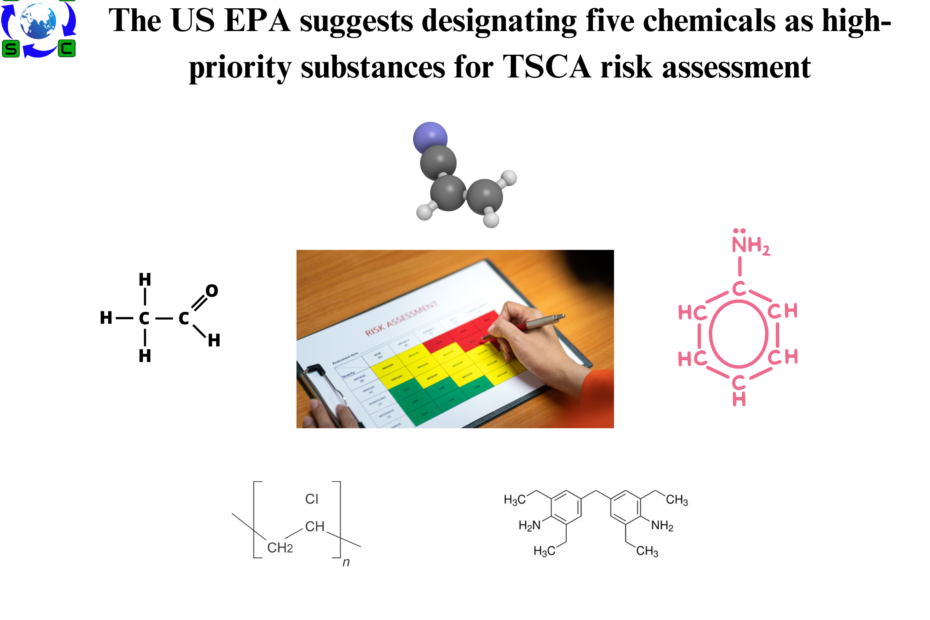 On July 24, the US Environmental Protection Agency (EPA) announced a proposal to designate five chemicals as high-priority substances for risk assessment under Section 6(b) of the Toxic Substances Control Act (TSCA).
On July 24, the US Environmental Protection Agency (EPA) announced a proposal to designate five chemicals as high-priority substances for risk assessment under Section 6(b) of the Toxic Substances Control Act (TSCA).
Prioritization Process
As part of its jurisdiction to control chemicals already on the market and in use, the EPA has established a priority list. A determination of danger is not implied by the EPA’s proposed designations. The EPA must finish these risk assessments for these chemicals within three to five years. If the EPA approves these designations, the agency will begin assessing the chemicals’ risks to the environment and human health to see if they pose an unreasonable risk under the TSCA conditions of use (the manner in which the chemical is manufactured and used). After conducting a thorough risk review, the EPA must start the risk management process in order to take appropriate action to remove any unjustifiable hazards to human health or the environment that may have been present for the chemical in question.
Chemicals Involved in the Proposal
- Acetaldehyde (CAS No. 75-07-0);
- Acrylonitrile (CAS No. 107-13-1);
- Benzenamine (CASRN 62-53-3);
- Vinyl Chloride (CAS No. 75-01-4); and
- 4,4′-Methylenebis(2-chloroaniline) (MBOCA) (CAS No. 101-14-4).
These chemicals are widely used in industrial production, and their potential health and environmental risks have drawn the attention of the EPA.
Expected Impact
Since the EPA states that this plan won’t directly affect people or organizations outside of its purview, no analysis of possible further effects was done. Nonetheless, the plan may have an indirect impact on the businesses that produce, import, distribute, and utilize these chemicals. Businesses and organizations that are relevant should closely monitor the results of the ensuing risk assessments.
Public Comment Preparation
The public and interested parties are invited to offer their thoughts during the 90-day public comment period that the EPA has started. Make sure to properly designate any secret material in accordance with EPA requirements and take care not to include secret Business Information (CBI) in emails or on websites when submitting comments. To aid the public in participating in the commenting process more successfully, the EPA also provides advice on how to prepare comments.








 Authorised IMDS & CDX Training & Consulting partner for
Authorised IMDS & CDX Training & Consulting partner for






